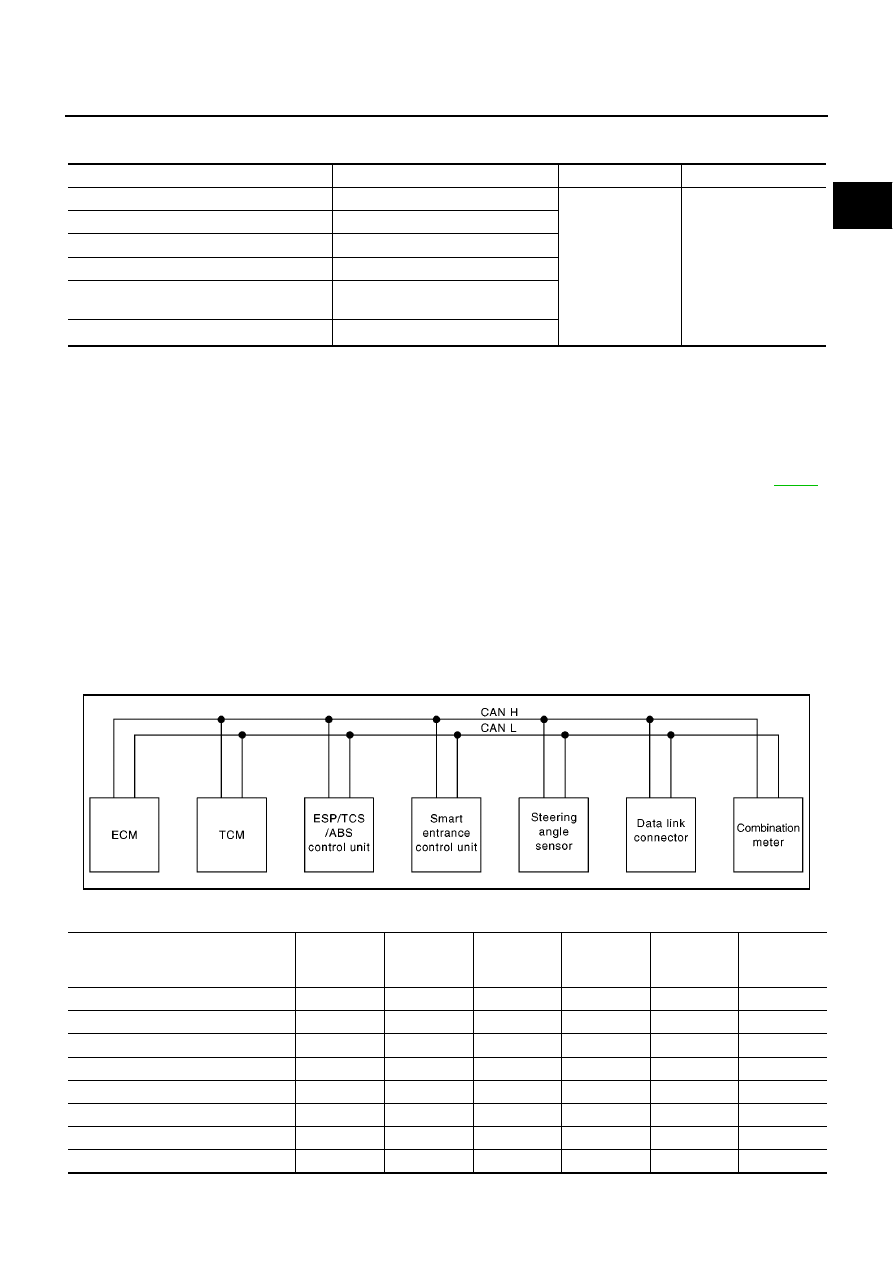Almera Tino V10 (2003 year). Manual - part 64

ENGINE CONTROL SYSTEM
EC-43
[QG (WITH EURO-OBD)]
C
D
E
F
G
H
I
J
K
L
M
A
EC
Fuel Cut Control (at No Load and High Engine Speed)
EBS00QGI
INPUT/OUTPUT SIGNAL CHART
*1: This signal is sent to the ECM through CAN communication line.
SYSTEM DESCRIPTION
If the engine speed is above 3,950 rpm with no load (for example, in neutral and engine speed over 3,950
rpm) fuel will be cut off after some time. The exact time when the fuel is cut off varies based on engine speed.
Fuel cut will operate until the engine speed reaches 1,500 rpm, then fuel cut is cancelled.
NOTE:
This function is different from deceleration control listed under “Multiport Fuel Injection (MFI) System”,
.
CAN Communication
EBS00QGJ
SYSTEM DESCRIPTION
CAN (Controller Area Network) is a serial communication line for real time application. It is an on-vehicle mul-
tiplex communication line with high data communication speed and excellent error detection ability. Many elec-
tronic control units are equipped onto a vehicle, and each control unit shares information and links with other
control units during operation (not independent). In CAN communication, control units are connected with 2
communication lines (CAN H line, CAN L line) allowing a high rate of information transmission with less wiring.
Each control unit transmits/receives data but selectively reads required data only.
A/T MODELS WITH ESP
System diagram
Input/output signal chart
T: Transmit R: Receive
Sensor
Input Signal to ECM
ECM Function
Actuator
Park/neutral position (PNP) switch
Neutral position
Fuel cut control
Fuel injectors
Throttle position sensor
Throttle position
Accelerator pedal position sensor
Accelerator pedal position
Engine coolant temperature sensor
Engine coolant temperature
Crankshaft position sensor (POS)
Camshaft position sensor (PHASE)
Engine speed
Vehicle speed signal
*1
Vehicle speed
YEL465E
Signals
ECM
TCM
ESP/TCS/
ABS control
unit
Smart
entrance
control unit
Steering
angle sensor
Combination
meter
Engine speed signal
T
R
R
Brake switch signal
R
T
Rear window defogger signal
R
T
Heater fan switch signal
R
T
Air conditioner switch signal
R
T
MI signal
T
R
Engine coolant temperature signal
T
R
Fuel consumption signal
T
R